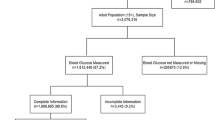Abstract
Objective:
The aim of the study was to determine the feasibility of improved maternal–neonatal care-seeking and household practices using an approach scalable under Nepal's primary health-care services.
Study Design:
Impact was assessed by pre- and post-intervention surveys of women delivering within the previous 12 months. Each district sample comprised 30 clusters, each with 30 respondents. The intervention consisted primarily of community-based antenatal counseling and dispensing and an early postnatal home visit; most activities were carried out by community-based health volunteers.
Result:
There were notable improvements in most household practice and service utilization indicators, although results regarding care-seeking for danger signs were mixed.
Conclusion:
It is feasible in a Nepal setting to significantly improve utilization of maternal–neonatal services and household practices, using the resources available under the government primary health-care system. This has the potential to significantly reduce neonatal mortality.
This is a preview of subscription content, access via your institution
Access options
Subscribe to this journal
Receive 12 print issues and online access
$259.00 per year
only $21.58 per issue
Buy this article
- Purchase on Springer Link
- Instant access to full article PDF
Prices may be subject to local taxes which are calculated during checkout
Similar content being viewed by others
References
Hill K, Thomas K, AbouZahr C, Walker N, Say L, Inoue M et al. Estimates of maternal mortality worldwide between 1990 and 2005: an assessment of available data. Lancet 2007; 370: 1311–1319.
Ahmad OB, Lopez AD, Inoue M . The decline in child mortality: a reappraisal. Bull World Health Organ 2000; 78: 1175–1191.
Nepal Ministry of Health and Population, NewERA, and MACRO Inc. Nepal Family Health Survey 2006. Nepal Ministry of Health and Population, NewERA, and MACRO Inc.: Kathmandu, 1997.
Nepal Ministry of Health and Population, NewERA, and MACRO Inc. Nepal Demographic and Health Survey 2006. Nepal Ministry of Health and Population, NewERA, and MACRO Inc.: Kathmandu, 2007.
Nepal Ministry of Health and Population, NewERA, and MACRO Inc. Nepal Demographic and Health Survey 2001. Nepal Ministry of Health and Population, NewERA, and MACRO Inc.: Kathmandu, 2002.
Buekens P . Review of ‘Traditional birth attendant training effectiveness: a meta-analysis’. Int J Gynaecol Obstet 2003; 83: 121–122.
Bhutta Z, Ahmed T, Black R, Cousens S, Dewey K, Giugliani E et al. What works: interventions for maternal and child under-nutrition and survival. Lancet 2008; 371: 417–440.
Mullany L, Darmstadt G, Khatry S, Katz J, LeClerq S, Shrestha S et al. Topical applications of chlorhexidine to the umbilical cord for prevention of omphalitis and neonatal mortality in southern Nepal: a community-based, cluster-randomized trial. Lancet 2006; 367: 910–918.
Bhutta Z, Memon Z, Soofi S, Salat M, Cousens S, Martines J . Implementing community-based perinatal care: results from a pilot study in rural Pakistan. Bull World Health Organ 2008; 86: 452–459.
Haws R, Thomas A, Bhutta Z, Darmstadt G . Impact of packaged interventions on neonatal health: a review of the evidence. Health Policy Plan 2007; 22: 1–23.
Baqui A, El-Ariefeen S, Darmstadt G, Ahmed S, Williams E, Seraji H et al. Effect of community-based newborn-care intervention package implemented through two service-delivery strategies in Sylhet district, Bangladesh. Lancet 2008; 371: 1936–1944.
UNDP. Nepal Human Development Report: Empowerment and Poverty Reduction. UNDP: Kathmandu, 2004.
Central Bureau of Statistics. Census 2001. Central Bureau of Statistics, Government of Nepal: Kathmandu, 2002.
Filmer D, Pritchett L . Estimating wealth effects without expenditure data—or tears: an application to educational enrollments in states of India. Demography 2001; 38: 115–132.
Bhutta ZA, Ali A, Cousens S, Ali TM, Haider BA, Rizvi A et al. Interventions to address maternal, newborn, and child survival: what difference can integrated primary health are strategies make? Lancet 2008; 372: 972–989.
Barriers and enabling factors influencing the use of a skilled birth attendant among marginalized populations in the mid-western region of Nepal. NewERA: Kathmandu, 2007.
Annual reports 2004/5, 2006/7 Kathmandu: Department of Health Services, Ministry of Health and Population, Government of Nepal 2005, 2007.
Mid-term household survey (unpublished). Nepal Family Health Program II 2009.
McPherson RA, Khadka N, Moore JM, Sharma M . Are birth preparedness programmes effective? Results from a field trial in Siraha District, Nepal. J Health Popul Nutr 2006; 24: 479–488.
Acknowledgements
The program described in this article was made possible by the generous support of the American people through the United States Agency for International Development (USAID), provided principally through a Nepal-based bilateral project (the Nepal Family Health Program II, implemented by JSI Research & Training Institute; CA#: 367-00-02-00017-00) and a centrally funded project (HARP-GRA, implemented by the Johns Hopkins Bloomberg School of Public Health).
Author information
Authors and Affiliations
Corresponding author
Ethics declarations
Competing interests
The authors declare no conflict of interest.
Rights and permissions
About this article
Cite this article
Hodgins, S., McPherson, R., Suvedi, B. et al. Testing a scalable community-based approach to improve maternal and neonatal health in rural Nepal. J Perinatol 30, 388–395 (2010). https://doi.org/10.1038/jp.2009.181
Received:
Revised:
Accepted:
Published:
Issue Date:
DOI: https://doi.org/10.1038/jp.2009.181
Keywords
This article is cited by
-
Impact of Sumadhur intervention on fertility and family planning decision-making norms: a mixed methods study
Reproductive Health (2023)
-
Community Health Worker Impact on Knowledge, Antenatal Care, And Birth Outcomes: A Systematic Review
Maternal and Child Health Journal (2022)
-
Training programs to improve identification of sick newborns and care-seeking from a health facility in low- and middle-income countries: a scoping review
BMC Pregnancy and Childbirth (2021)
-
Factors influencing implementation of interventions to promote birth preparedness and complication readiness
BMC Pregnancy and Childbirth (2017)
-
Market mechanisms for newborn health in Nepal
BMC Pregnancy and Childbirth (2017)



